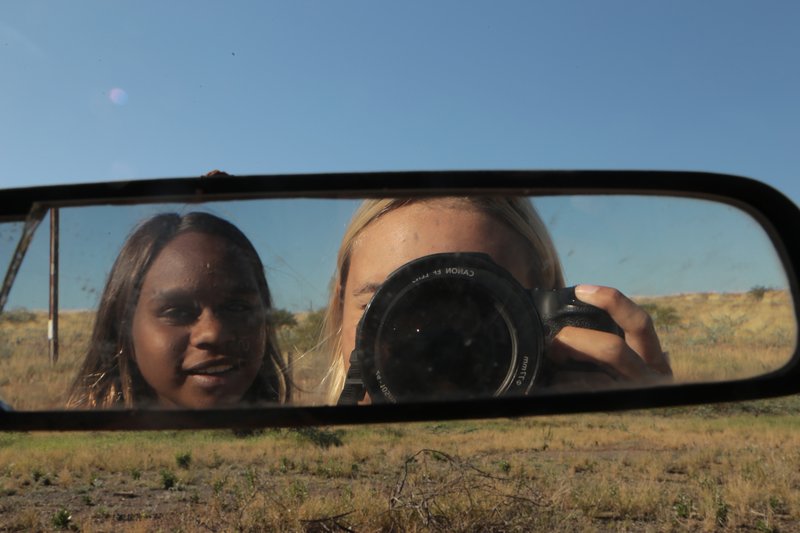Major review of the Australian Curriculum
Image: Chenise Cameron, Untitled, 2020. Ngarluma Country (Roebourne), WA.
Image: Chenise Cameron, Untitled, 2020. Ngarluma Country (Roebourne), WA.

The Australian Curriculum, Assessment and Reporting Authority (ACARA) has recently released its proposed revisions to the school curriculum after a much anticipated review of the core knowledge and skills taught to students from Foundation, or kindergarten, to Year 10.
The Review looks to improve the Australian Curriculum by refining, realigning and decluttering the content so it focuses on the essential knowledge and skills students should learn and is clearer for teachers on what they need to teach. The Review is now open to public consultation and feedback until 8 July 2021.
Research continues to affirm the value of art education in providing life enrichment for everyone including through school and beyond. and the life skills that visual arts teaches us. There are countless studies that demonstrate that training in the arts helps students learn the skills of creativity, innovation, agility, intellectual curiosity, resourcefulness, exploratory thinking, communication, teamwork, problem solving, emotional judgement, professional ethics, global citizenship, entrepreneurship and the courage to take risks, qualities which are becoming increasingly essential for the 21st century working environment.
For nearly 20 years, NAVA has been part of vigorous advocacy campaigns for the mandating of visual education in all schools around the country. In partnership with the National Advocates for Arts Education (NAAE), NAVA campaigned for the current national curriculum and advised at every stage of its development. Finally endorsed in October 2015, The Australian Curriculum: The Arts provides a rationale and specifies curriculum content from Foundation to Year 10 for five artforms: Dance, Drama, Media Arts, Music and Visual Arts.
The Review is an opportunity now to build on the strengths of the existing national curriculum to both improve its accessibility for classroom teachers as well as deepening engagement and knowledge of the visual arts for students. We are very excited to see many new elements proposed as part of this Review including listening to the voices of First Nations artists when students access and learn about cultural expressions; reinforcing process, play and experimentation as central to visual arts practice; visiting art galleries; reference to regional and national collections; literacy as way to respond to visual arts; artistic concepts from across times; identifying and understanding copyright and Indigenous Cultural and Intellectual Property (ICIP), and engaging in activities that help students understand how to make ethical choices.
Since announced last year, NAVA has been following this timely review with great interest and is currently consulting with the sector for our response, particularly with regard to areas which seem to be lacking as part of this review. The current curriculum does not include guidelines on which artists students should learn about, which means a teacher could go an entire year without referring to a single living Australian artist. NAVA will be making recommendations toward an explicit responsibility to share diverse artists including living Australian artists. Further, NAVA notes there is minimal mention of craft practice and 3D practice under the current elaborations as a guide for teachers in relation to the content descriptions.
To support the delivery of the visual arts curriculum NAVA also recommends expert knowledge to guide resources and content. We would like to see our national collecting institutions work with the national curriculum to ensure it aligns with the strength of our national visual arts identity. Currently there is a lack of consistency to meet the national curriculum with supporting evidence across our institutions. The curriculum is more likely to be adopted and referenced when collecting institutions release mapped curriculum documents with unique or aligned elaborations for all current and future programs, educational offerings and tours. This work will serve as exemplar practice to support time poor teachers to deliver visual arts learning successfully in the classroom.
NAVA is consulting with the sector for our response ahead of the 8 July deadline. As part of this process, we are hosting a one-hour participatory meeting at 4pm AEST on Thursday 17 June 2021 via Zoom. See NAVA meeting information below.
NAVA is hosting a one-hour conversation to discuss the curriculum review and what’s needed in both NAVA’s response as well as in responses from across the visual arts and craft sectors.
Thursday 17 June, 2021 4:00 - 5:00 PM AEST Canberra, Melbourne, Sydney
As this is a short meeting, we encourage you to read the Arts curriculum documents in preparation. At a minimum, please read over the comparative information for The Arts, Foundation to Year 6 (all subjects) as well as the comparative information Visual Arts Year 7 to 10.
If you are a school teacher, NAVA can offer a letter of attendance for you to log it as Professional Development hours. If you are unable to attend this meeting, you are welcome to email your feedback to nava@visualarts.net.au. Alternatively you can provide feedback on The Australian Curriculum: The Arts through the ACARA survey. You can see a copy of the survey questions before you begin.